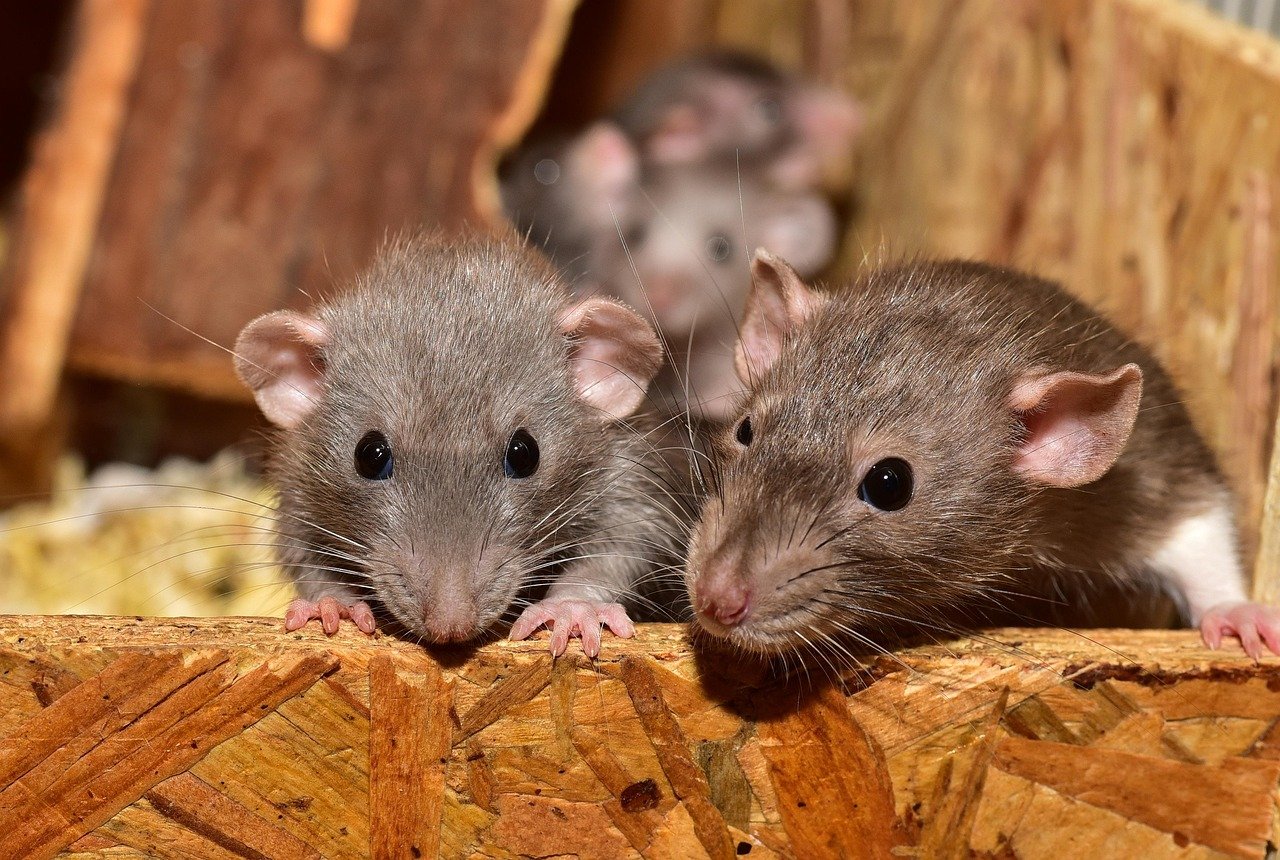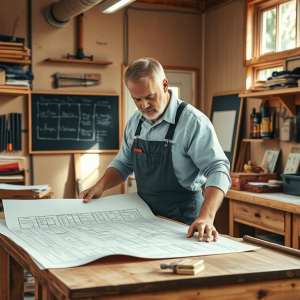Last Updated on August 20, 2024 by teamobn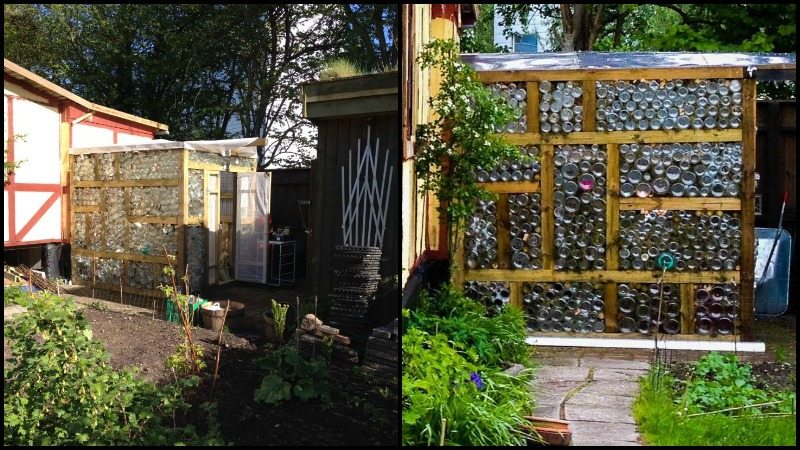
Want to build a greenhouse in your backyard? If you have access to plenty of glass jars, you can use them for a very cheap glass jar greenhouse!
A glass jar greenhouse is a structure used to raise plants under controlled conditions. Greenhouses allow plants to be grown in places where it is too cold, too hot, dry, or humid to grow plants.
Many tropical plants cannot be grown outdoors, so a greenhouse will usually have to be heated in order for the plants to survive.
The jars will let in sunlight, and the greenhouse will trap heat, creating the perfect environment for your plants! By controlling the amount of sunlight and heat that your plants receive, you can ensure that they thrive.
Start asking your friends and neighbors for empty jam jars. You can also ask your local restaurants and take-aways to keep bottles for you! This glass jar greenhouse costs almost nothing depending on the materials you already have.
We’ve been collecting glass jars for quite some time now without any purpose in mind. When we came across this idea we’re glad we’re already halfway through getting enough glass jars for this greenhouse project!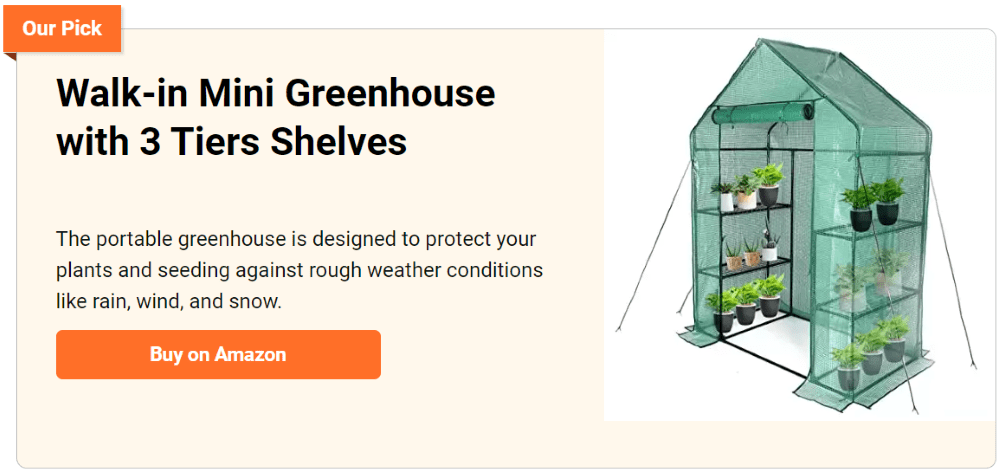
We think this is a great idea since you can even use the largest glass jars to start some seeds — mini-greenhouses inside a greenhouse!
The only thing missing in this greenhouse is the permanent roof. If you were to build one, what roofing are you going to use?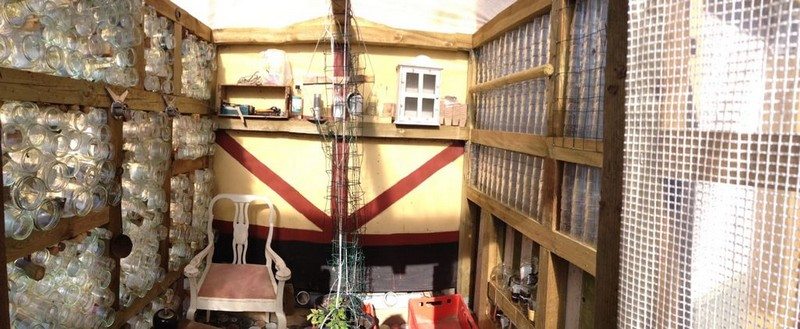
Read on to see how DIY-er dklafe built his glass jar greenhouse and share your ideas on how it can be further improved!
Would you like to build your own version of a glass jar greenhouse? 🙂
Building a Glass Jar Greenhouse
Materials
- 10 x 10cm Fence Posts
- Glass Jars with Lids
- Moss
- Cement
- Fine Gravel
- Wheelbarrow
- Door Hinges and Handle
- Screen
Tools
- Shovel
- Measuring Tape
- Drill
Steps


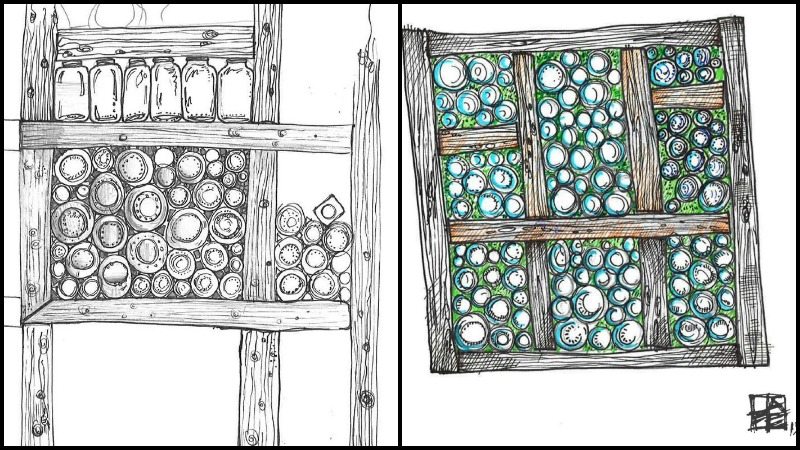
I used 10cm x 10cm “fence” posts for the frame which worked out quite nicely with the average height of my glass jars.
My glass jar greenhouse is “free-standing” but I guess it would be best to have some sort of foundation if building on grass – the final structure is quite heavy. I don’t want my greenhouse to fall over and crush my plants!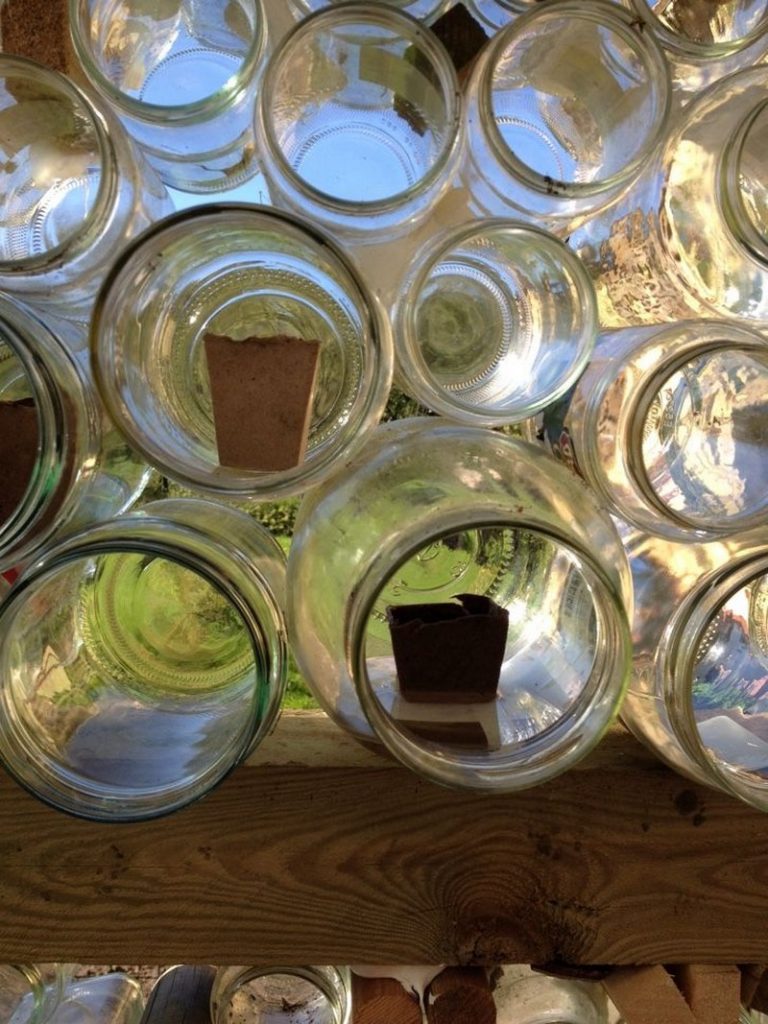

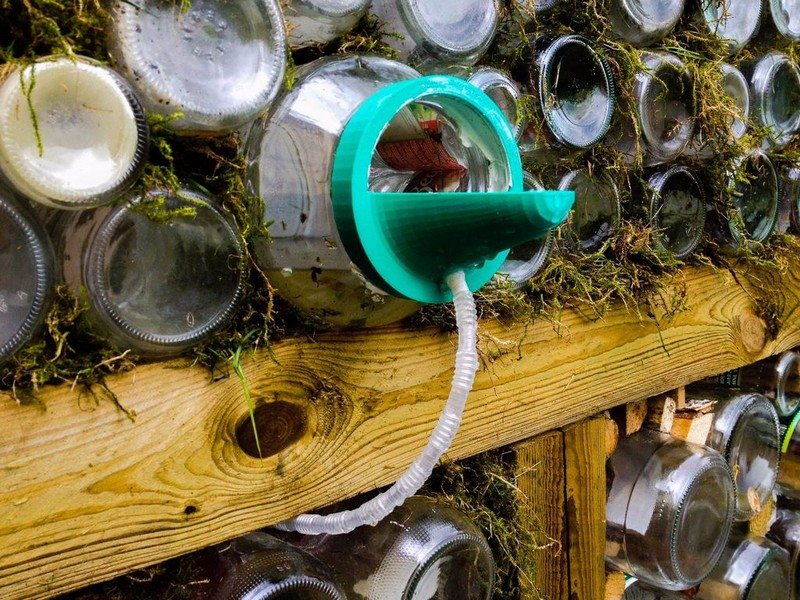
It is important not to make the spaces between the posts – too large, stacking the glasses can be tricky – and if they are high up can be dangerous.
My greenhouse is roughly 2m square – and when it’s finished will probably have used about 1000 jam jars. (and I have only filled 3 out of 4 walls). I asked all my neighbors and colleagues to bring me their jars. The canteen at work was also great for getting oversized jars – the big jars can have multiple uses.
I 3D printed the adapter to collect rainwater. The files are available from thingiverse.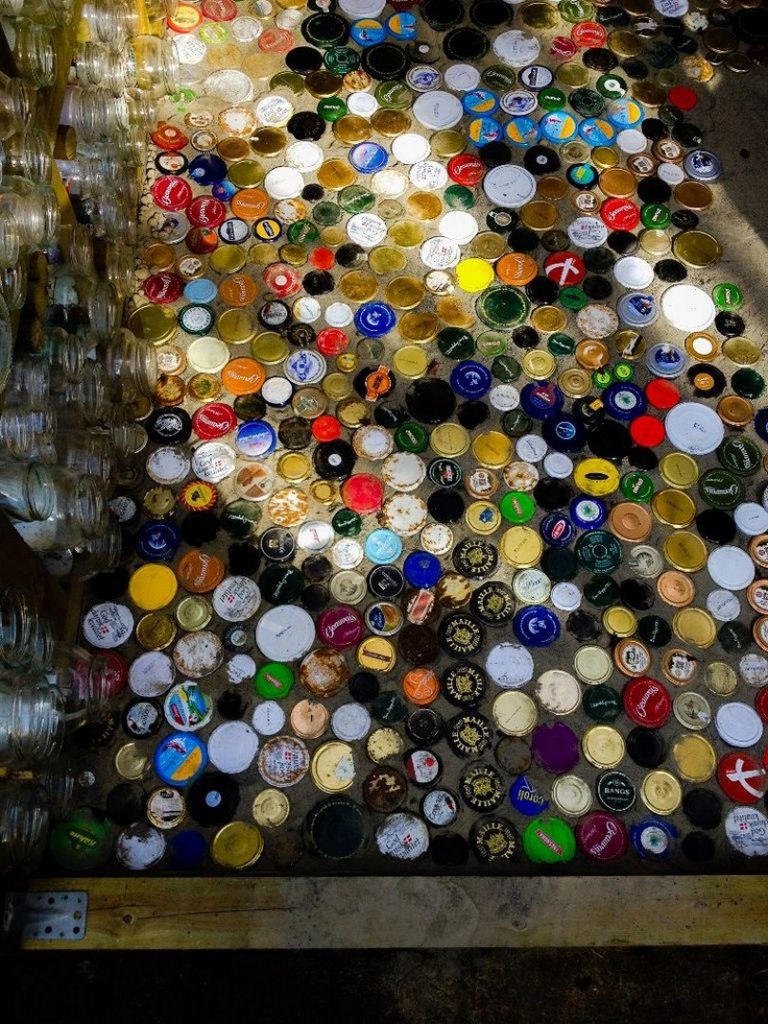
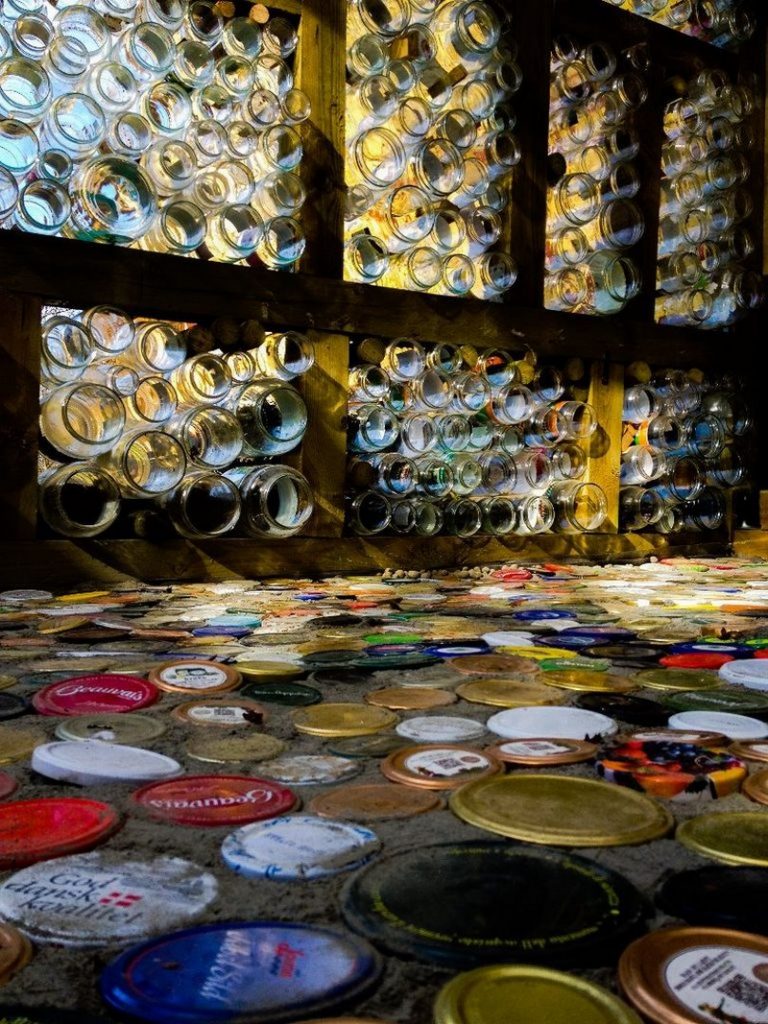
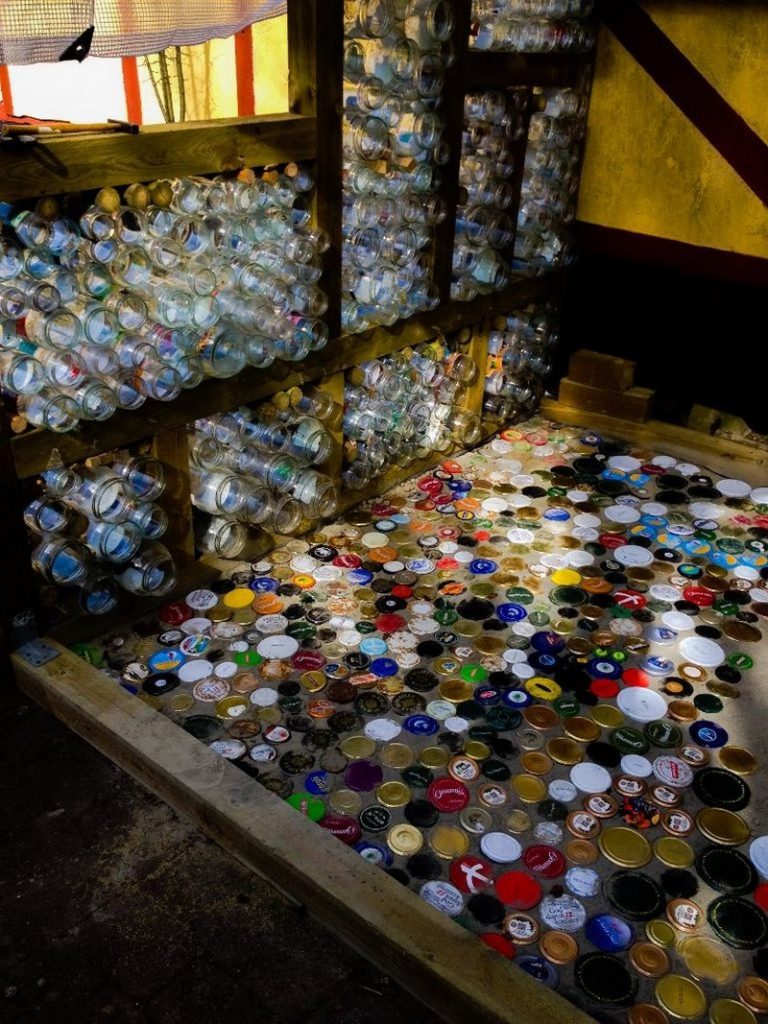
I mixed some fine gravel and a bag of cement (no water) – I spread the mixture on the floor about 1cm deep. I then pressed in the lids, trying not to think about the order and colors. I like the random look. After a few days, the gravel/cement mixture had absorbed moisture from the air and had set.
TIP: I was amazed at how many lids were required to tile the floor. You might want to make sure you have enough lids before you start setting them in cement. I would have thought that a few lids would have been sufficient, but I was wrong. It took a lot of lids to tile that floor, and I’m glad I had enough.
Thanks to dklafe for this great idea!
Benefits of Using Glass Jars as Greenhouses
Using glass jars as greenhouses offers a unique and environmentally friendly way to garden. This approach not only recycles materials that would otherwise end up in landfills but also creates a controlled environment for plants to thrive. Here we’ll explore the various benefits of employing a glass jar greenhouse, detailing how such a setup can be both beneficial and sustainable.
Sustainable Material Use
One of the primary advantages of a glass jar greenhouse is its foundation in sustainability. Glass jars are readily available and often discarded, making them an excellent choice for recycling into greenhouse structures. By repurposing these jars, gardeners can reduce waste and contribute to environmental conservation. Additionally, glass is a durable material that can withstand various weather conditions, ensuring the longevity of the greenhouse.
Enhanced Plant Growth
A glass jar greenhouse creates a micro-climate that can significantly boost plant growth. The glass effectively traps heat and moisture, maintaining a consistent internal environment that is often more controlled than the external weather conditions. This warmth and humidity are ideal for seed germination and for growing tropical plants that require a stable, warm environment. The clear glass also ensures that plants receive plenty of sunlight, which is crucial for photosynthesis and overall plant health.
Pest and Weather Protection
Utilizing a glass jar greenhouse provides excellent protection against pests and harsh weather. The sealed environment keeps out insects and animals that could potentially harm the plants. Additionally, the sturdy glass jars shield the plants from strong winds, heavy rain, and other adverse weather conditions that might otherwise damage or destroy delicate plants. This protection extends the growing season, allowing gardeners to start their planting earlier in the spring and extend it later into the fall.
Aesthetic Appeal
Apart from their utility, glass jar greenhouses can be aesthetically pleasing. Glass jars can be arranged anyway one wants to fit any area and can be created in different designs to improve the look of a garden. A glass jar greenhouse can be a striking garden centerpiece that attracts visitors’ compliments and attention whether it’s a more artistic, sculptural form or a neat grid.
Educational and Experimental Opportunities
A glass jar greenhouse offers a useful and obvious illustration of these ideas in action for those drawn to teaching or learning more about botany, ecology, or sustainability. Whether in public gardens, community centers, or classrooms, this is a great tool for instructional uses. Offering a hands-on method of instruction, gardeners can test several plant species, environmental conditions, and greenhouse designs to find what performs best.
Including a glass jar greenhouse into your gardening routine not only makes a green decision but also improves the protection and development of your plants. Environmentally minded gardeners would find this creative solution ideal since it combines sustainability with pragmatic gardening needs.
Common Challenges and Solutions
Building and maintaining a glass jar greenhouse presents a set of unique challenges. While the concept is innovative and environmentally friendly, it requires careful consideration to ensure that the greenhouse operates effectively.
This section explores common hurdles that gardeners might face when using a glass jar greenhouse and offers practical solutions to overcome these issues.
Temperature Regulation
- Challenge: One of the primary challenges in a glass jar greenhouse is maintaining an optimal temperature. Glass jars can create a “greenhouse within a greenhouse” effect, which might lead to overheating during sunny days.
- Solution: To manage temperature effectively, consider installing small vents or openings that can be opened or closed to control airflow. Using shade cloths during the hottest part of the day can also prevent overheating. Additionally, strategically placing water containers inside can help stabilize temperature fluctuations by absorbing heat during the day and releasing it at night.
Condensation Control
- Challenge: High humidity levels inside a glass jar greenhouse can lead to excessive condensation, which might result in mold growth or water damage to plant roots.
- Solution: Improving ventilation is crucial for managing humidity levels. Ensuring that there are adequate gaps between the jars for air circulation can help reduce condensation. If humidity continues to be a problem, using moisture-absorbent materials like silica gel around the base of the plants can help keep the environment dry.
Structural Integrity
- Challenge: The weight of glass jars, especially when arranged in larger structures, can pose a challenge in terms of structural integrity and safety.
- Solution: It’s important to ensure that the base and frame of the greenhouse are sturdy enough to support the weight of the glass jars. Using reinforced frames or building smaller, more manageable sections can enhance stability. Regular inspections to check for any cracks or weaknesses in the glass jars are also advisable to prevent accidents.
Light Distribution
- Challenge: Ensuring that each plant receives adequate light can be difficult in a glass jar greenhouse, as the jars can sometimes cast shadows or create uneven lighting.
- Solution: Positioning the greenhouse to maximize sunlight exposure is key. Aligning it in a south-facing direction in the Northern Hemisphere ensures optimal sunlight throughout the day. Additionally, using mirrors or reflective materials inside the greenhouse can help distribute light more evenly.
Longevity and Maintenance
- Challenge: Over time, the glass jars may become cloudy or the seals might degrade, which can affect the greenhouse’s functionality.
- Solution: Regular cleaning of the glass jars will help maintain their transparency and maximize light penetration. Replacing the seals or the lids of the jars periodically can also help keep the greenhouse airtight and functioning properly. It’s a good idea to keep a stock of spare jars and lids for quick replacements when needed.
By addressing these common challenges with thoughtful solutions, you can enhance the effectiveness of your glass jar greenhouse. Each solution not only improves the operational aspects of the greenhouse but also ensures that it remains a sustainable and productive part of your gardening activities.
Conclusion
A glass jar greenhouse offers a sustainable approach to gardening, utilizing recycled materials to create a controlled growing environment. This innovative structure enhances plant growth through its ability to maintain consistent internal conditions, offering both aesthetic and practical benefits. Moreover, its protective qualities against pests and harsh weather make it an ideal choice for gardeners seeking to extend their growing seasons effectively.
If you liked this project, you might also like these gardening ideas…




